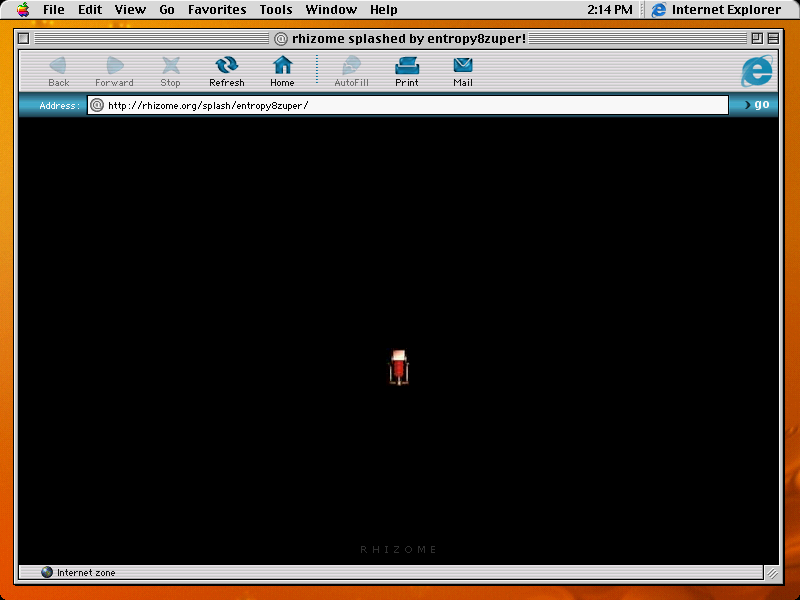Screenshot from Entropy8Zuper!, rhizome splashed, 2000. Courtesy of the artists and Rhizome.
Splash art originated in comics from the 1940s, where the term referred to a full page of visuals at the front of a book. These pages were designed to help stimulate the reader's imagination and allow them to engage with the comic on a broader level while remaining independent from the narrative.
In the late 1990s, when the widespread use of the application Flash opened up new possibilities for animation and interactive media, the idea of the splash page migrated to web design. Online splash art brought visual excitement to a webpage when low modem speeds made it impractical to post large or moving images amid a site's textual content.
Flash introduced generative methods to a wide range of artists. It incorporated a timeline which allowed for visual editing, but also allowed artists to easily incorporate code into their work using a language known as ActionScript. Artists like Entropy8Zuper!, for example, have utilized ActionScript to program interactive elements, animations, and user interactions in their web-based artworks.
In 1998, Rhizome introduced splash pages to its website in order to display artwork with greater immediacy. These splash pages were designed by artists such as Josh Davis and the aforementioned Entropy8Zuper! duo, Aureia Harvey and Michaël Samyn.


